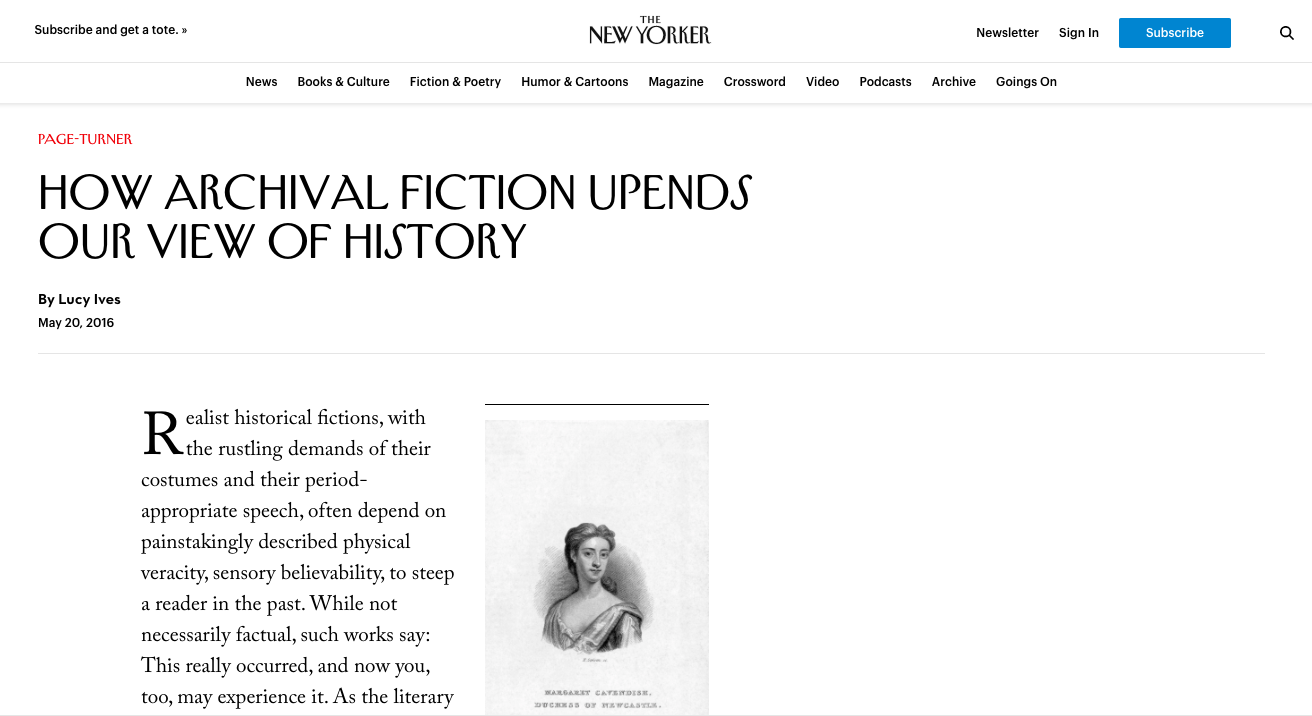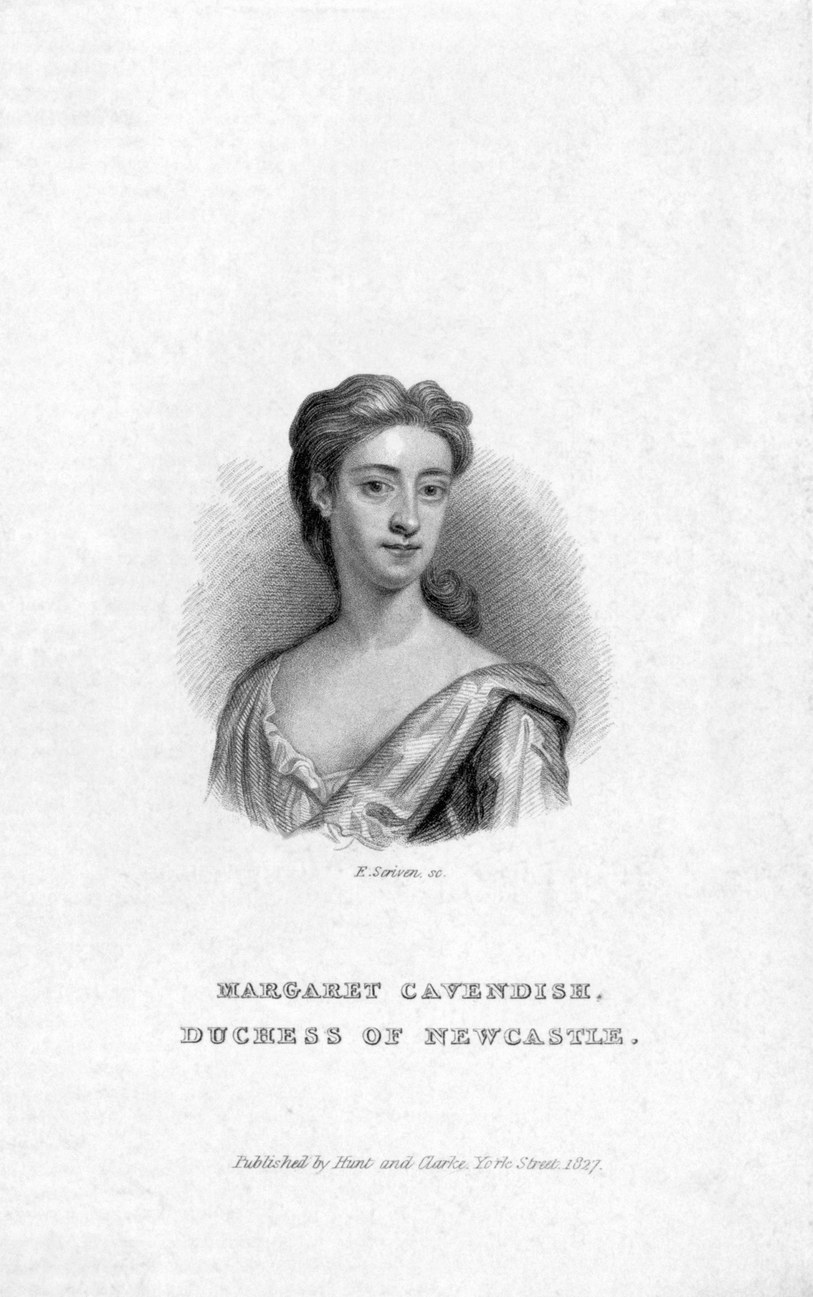HOW ARCHIVAL FICTION UPENDS OUR VIEW OF HISTORY
Realist historical fictions, with the rustling demands of their costumes and their period-appropriate speech, often depend on painstakingly described physical veracity, sensory believability, to steep a reader in the past. While not necessarily factual, such works say: This really occurred, and now you, too, may experience it. As the literary historian Stephen Greenblatt enthused in a review of “Wolf Hall,” Hilary Mantel’s novel about the rise of Thomas Cromwell—perhaps the paradigmatic contemporary example of such fiction—great historical novels “provide a powerful hallucination of presence, the vivid sensation of lived life.”
But a handful of recent works of fiction have taken up history on radically different terms. Rather than presenting a single, definitive story—an ostensibly objective chronicle of events—these books offer a past of competing perspectives, of multiple voices. They are not so much historical as archival: instead of giving us the imagined experience of an event, they offer the ambiguous traces that such events leave behind. These fictions do not focus on fact but on fact’s record, the media by which we have any historical knowledge at all. In so doing, such books call the reader’s attention to both the problems and the pleasures of history’s linguistic remains.
The book that made this distinction clear to me is a new novel by Danielle Dutton, called “Margaret the First.” Dutton’s Margaret is Margaret Cavendish, Duchess of Newcastle-upon-Tyne, who lived from 1623 to 1673 and was one of the first British women to publish in print under her own name. Cavendish wrote numerous plays, poetry collections, memoirs, philosophical and scientific treatises, and one of the earliest works of utopian science fiction, a novel titled “The Blazing World.” Her marriage to the liberal and well-connected William Cavendish was significant not just for the title it afforded her but because of William’s acquaintance with such contemporary luminaries as René Descartes, Thomas Hobbes, and Marin Mersenne. Though Margaret’s interactions with these men were mostly indirect, their influence is felt throughout her oeuvre, including her unusual “Philosophical Letters,” of 1664, an imagined correspondence in which she debates many of their views and the mechanistic scientific tendencies of the time.
Cavendish’s life had enough drama to serve a more conventional historical novel; at least one or two of her illegitimate children, lost to history, could surely have been imagined in these pages. Or Dutton might have chronicled a love affair with, say, the cross-dressing Queen Christina of Sweden, whom Cavendish imitated in one of her own most audacious social stunts, baring her rouged breasts at the theatre. But Dutton’s Duchess mostly stays at home. And she exists, in this book, as a study in textual vestiges, as much palimpsest as person. She is first revealed to the reader via the celebrated diarist Samuel Pepys. Dutton draws on quotations from Pepys’s diary to narrate an amusing interlude from his life: he was in a crowd when Cavendish’s carriage drove by, the mob shouting after it “Mad Madge! Mad Madge!” (The origins of that nickname are disputed, but Cavendish was well known for sartorial, as well as literary, eccentricity.) Dutton’s Pepys feels himself slightly above fandom, but he is struck by her nonetheless: “The whole story of this lady is a romance, and everything she does,” he writes.
That Cavendish’s contemporaries considered her a sort of fiction, even in the flesh, makes her a particularly appropriate subject for Dutton’s approach. The novel is told half in the first person, half in the third, and in some sense very little occurs. Dutton does not supplement the fascinating material details of Cavendish’s milieu with period intrigue; there are no poisonings, no clavichord-backed avowals of love. There are, instead, vivid, episodic bursts of narration, recounting a birthday party, the teasing of her by siblings, and Margaret’s time at court in Oxford, after the revolution interrupted her aristocratic family’s bucolic life. Dutton gives us brief, imaginative glimpses of the youthful Margaret, but as she becomes more famous and, therefore, more recorded, by herself and by others, what we get becomes less speculative, and more tied to those records. In this way, Dutton foregrounds the textual limitations of history, even if it means inventing less of Margaret’s later years.
Dutton’s previous novel, “Sprawl,” is an ekphrastic meditation on the aesthetics of American suburbs, and “Margaret the First,” like that book, is largely descriptive. So, for example, a section about Cavendish’s struggle to conceive a child consists largely of a list of the cures that were prescribed to her and her husband:
This time they tried, for him, crystals taken from wood ash and dissolved in wine each morning; for me, a tincture of herbs put into my womb at night with a long syringe. I submitted silently, William out in the hall. Come autumn I was to be injected in my rectum with a decoction of flowers one morning, followed by a day-long purge, using rhubarb and pepper, then a day of bleeding, then two days where I took nothing but a julep of ivory, hartshorn, and apple, followed by another purge—and on the seventh day I rested. After this came a week of the steel medicine (steel shavings steeped in wine with fern roots, nephritic wood, apples, and more ivory), described by a maid as "a drench that would poison a horse."
Throughout the novel, Dutton treats the reader to a variety of carefully researched objects: “a fine sugar cake with sprigs of candied rosemary like diamond,” “a transparent beehive from which the men extorted honey without disturbing the bees.” Cavendish believed that everything in the universe was fundamentally material, and that matter—including, for instance, books and letters—was capable of thought. It makes a kind of sense, then, that Dutton would reanimate her through textual and material sources—including Virginia Woolf’s essay about her, “The Duchess of Newcastle,” lines from which appear in “Margaret the First.” Dutton acknowledges this in an Author’s Note, and includes a list of more than twenty other books she drew on in her research. Reviewing the book in the Times, the writer Katharine Grant suggested that this reliance on other sources might make readers see the novel as “more a sewing together than an entirely original work,” as though that would be a bad thing. But this is a virtue, and the key to Dutton’s portrayal.
Dutton’s handling of history calls to mind other recent books set in the past, books that have, on the surface, little in common with “Margaret the First.” Marlon James’s Man Booker Prize-winning “A Brief History of Seven Killings,” from 2014, revolves around an attempt on Bob Marley’s life in the late seventies. But the book is full of contentious, unresolvable voices, and never gives us an objective spot to stand on. The role of narrator cycles among members of the police, both Jamaican and American C.I.A., and among agents of various syndicates; there are also relatively innocent bystanders. The story is constantly shifting, and no one seems entirely up to date on what has actually happened. One of James’s characters, Papa-Lo, a Jamaican gang leader of the nineteen-sixties and seventies, gives voice to this continual state of uncertainty. “Sometimes,” he says, “I don’t learn till too late, and to know something too late? Well is better you never know as my mother used to say. Worse, you all present tense and have to deal with sudden past tense all around you. It’s like realizing somebody rob you a year late.” The novel revels in the immediacy of oral history even as it points out, “Rashomon”-like, the difficulty of establishing a single, unified story via first-hand accounts. Perhaps, James seems to suggest, there is no such thing—no pure, stable, and eternally recognizable occurrence, against which all other occurrences can be measured.
John Keene’s short story and novella collection “Counternarratives,” published last year, does something similar, albeit in a very different style. Keene presents many of his stories in the official voice of history; they include maps and newspaper clippings and employ archaic prose styles, and they gradually reveal the ways in which histories lie. “On Brazil, or Dénouement: The Londônias-Figueiras” opens with a news account of the discovery of a dead body in a favela. Then the story shifts to a historian-narrator, who chronicles a dynasty of slave-holding Brazilian oligarchs. Gradually it becomes clear that neither this historian nor the news report can be trusted. Elsewhere, Keene’s protagonists speak in the first person, at once revealing themselves and receding into attractive turns of phrase. Keene’s polyvocal narratives masquerade as “primary-source documents” and present convincing first-person testimony, while at the same time establishing undercurrents that undermine the victors’ tales—and any hope that we will ever fully settle on the truth.
These techniques are not entirely new, of course. Umberto Eco’s best-selling “The Name of the Rose,” published more than three decades ago, is a semi-archival fiction, which imagines that the pages of Aristotle’s writings on comedy were poisoned by a zealous medieval monk, then destroyed in a fire. But Eco’s murder mystery is a flagrantly fictionalized work of literary commentary; his novel wants us to meditate on the canonical prohibition of laughter via an obviously fanciful imbroglio. Though it’s not a work of fiction, a more interesting point of comparison might be Michel Foucault’s strange 1975 text, “I, Pierre Rivière, Having Slaughtered My Mother, My Sister, and My Brother...: A Case of Parricide in the 19th Century.” Foucault collects the dossier of the legal proceedings, including first-person testimony, along with Rivière’s own beatific autobiography. “Pierre Rivière” is, then, quite literally an archive, but it also functions like a novel, a quality not lost on Foucault.
Though she draws extensively on textual sources, Danielle Dutton does allow herself the freedom of a novelist. (Her author’s note begins, “This is a work of fiction.”) “I am much too,” Dutton’s Cavendish says at one point, unabashedly comparing herself to accomplished men of her day. Cavendish is much, but I have been unable to locate this boastful phrase in any of her published output. Of course, this does not mean that the Duchess could not have scribbled it somewhere or, perhaps, thought it. But clearly, in “Margaret the First,” there is plenty of room for play. Dutton’s work, like James’s and like Keene’s, serves to emphasize the ambiguities of archival proof, restoring historical narratives to what they have perhaps always already been: provoking and serious fantasies, convincing reconstructions, true fictions.

On site.

Margaret Cavendish, the Duchess of Newcastle, seen here in an undated seventeenth-century illustration.
Author's Note: The final lines of this essay promote a theory of historical ambiguity that could be understood as relativistic (i.e., all accounts are equally suspect). This is of course not the case, and the essay should have been edited to reflect this important fact. To repeat: Some histories are more accurate, more urgent, and, yes, more true than others.